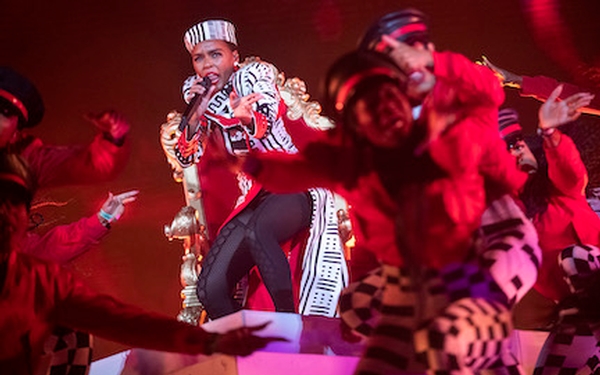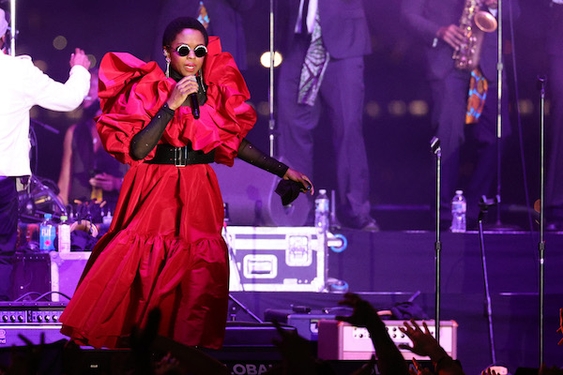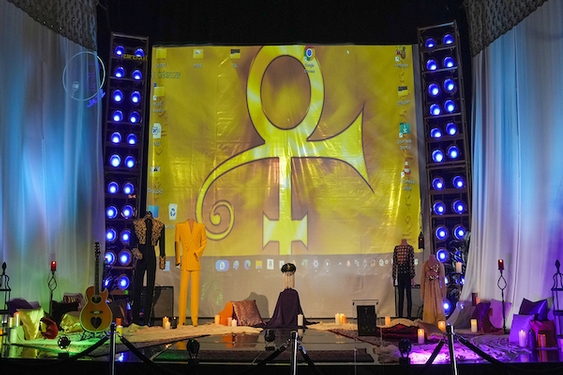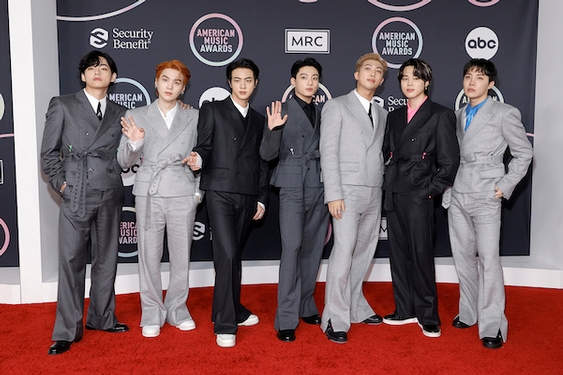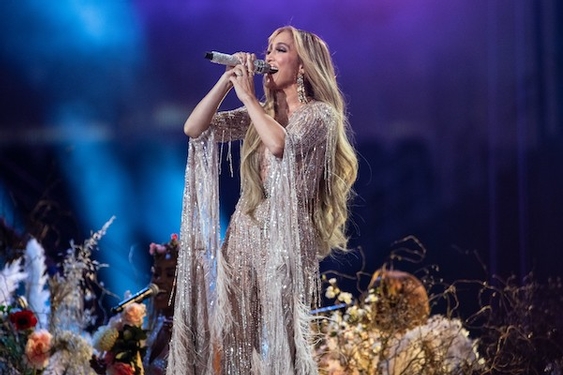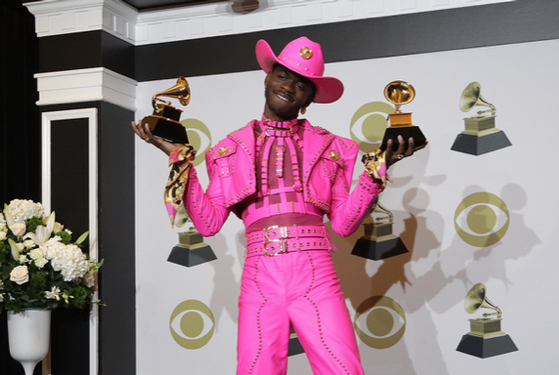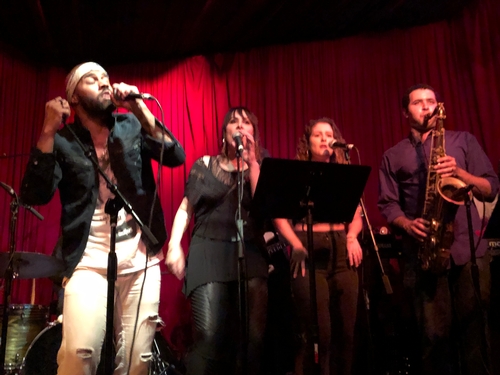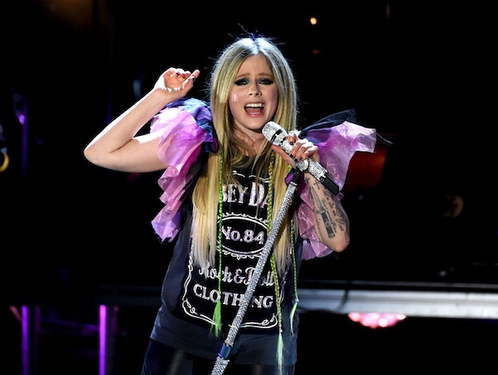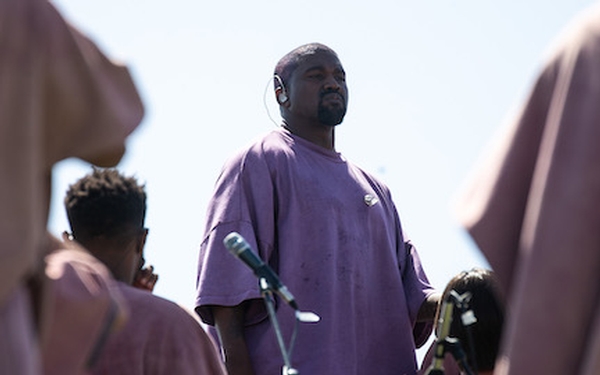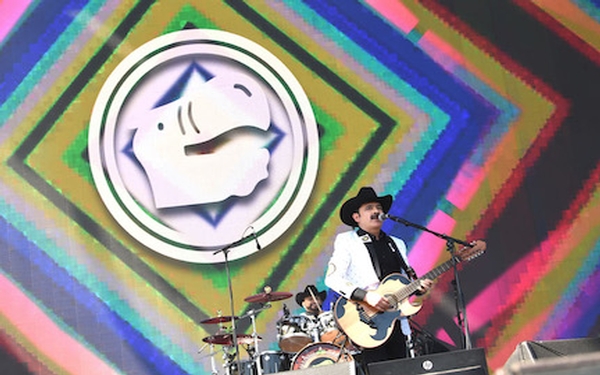Janelle Monáe, at the start of her performance at the Coachella Valley Music and Arts Festival on Friday, appeared alone at the top of a tiered, white pyramid-like structure.
She wasn’t alone for long, though. After a few bars of the Prince-esque “Crazy, Classic, Life,” dancers would emerge. And as the set progressed, she would be joined by a small army of 18 performers, all dressed in black and white checkered bodysuits and red jackets, and all choreographed to reflect the tone of her music — femininity at its most powerful, celebratory and individualized.
The dancers were a constant presence and force throughout the 50-minute set, a group of best friends, her personal hype-women and a real-life embodiment of Monáe’s “black girl magic” message.
“Dancers are so integral because they’re extensions of the artist on stage,” said Monáe’s choreographer and show director, Jemel McWilliams. “They are the visual voice for the artists.”
The moves weren’t always complex. On Monáe’s “I Like That,” the dancers were simply seated on the stage, framing the artist.
On stages large and small across Coachella’s first weekend, dance not only brought performances to life but sought to heighten the personalities of the various performers. And the looks, tones and moves were diverse, including contemporary theatrics from Christine and the Queens, flamenco fusion from Rosalía, West-African stylings from Mr. Eazi and Lizzo’s body-positive twerk-fest. Though designed to accompany music, Coachella was a showcase for thoroughly modern, highly visual dance.
Choreographing such shows is a meticulous process.
On the Tuesday before Monáe’s performance, McWilliams rehearsed with the cast of dancers at a Burbank studio. As a full production rehearsal, the group ran through numbers using Coachella stage props and Monáe’s band.
McWilliams paced the room with a notebook, making adjustments to the dancers’ formations and clarifying questions about differences in the rehearsal space and the Coachella main stage. As he sang and hummed bits of “Tightrope,” he patiently looked for bits of choreography to fine-tune.
When they ran through “I Got the Juice,” a funky track featuring producer Pharrell Williams, the rehearsal space erupted into a dance playground with some miming a game of double dutch, others freestyling.
McWilliams stood in for Monáe, holding rolled up paper as a pretend-microphone.
After rehearsing the section a few times, the dancers took a break for lunch, but as the choreographer and show director for rapper-singer Lizzo as well, McWilliams had more work to do. At a nearby studio on the same Burbank lot, McWilliams watched Lizzo’s dancers hone their choreography for “Tempo,” a bass-heavy song celebrating plus-sized women.
This choreography featured Lizzo’s cast of curvy dancers strenuously twerking in various formations. The dancers are representative of the rapper’s movement promoting inclusion and body positivity. “[This] is showing the world that full-figured women can dance just as hard as your typical, stereotypical dancer on stage,” he said.
Although McWilliams developed much of Monáe’s festival choreography before her 2018 tour, getting ready for both Coachella performances meant quite a few 16-hour-plus days. As show director, McWilliams is also responsible for the “overall show flow,” including lighting, content and styling.
McWilliams said he felt the pressures of creating a show following Beyoncé’s historic “Homecoming” performance in 2018. “The challenge has been coming off of Beychella,” he said. But he stressed that Coachella is still just a festival that’s “dirty, gritty, and spontaneous and rock and roll.” The objective is to have a good time while “still putting on an excellent show.”
His general choreography process begins by spending time with artists to get a deeper understanding of their songs. “And then I just try to paint the picture from there,” he said.
But creating the actual steps is a bit harder to define. “I don’t know how it happens, but I start getting twitches,” he said. “Anyone on my team knows when [I’m] in the zone, [I] start pacing back and forth.”
Choreographer Charm La’Donna described a similar process. This year, La’Donna worked with Spanish performer Rosalía for about two weeks in Madrid and Barcelona to develop choreography for the artist’s flamenco fusion at Coachella.
As an artist from Compton, La’Donna enjoyed fusing two different cultures through dance. She said her job was to bring the show to life.
At Rosalía’s Friday set, she was flanked by a group of six dancers. On one song, the dancers repeated a punching motion, and when Rosalía joined in, energetically thrusting her fists and chest, the crowd roared. During “Que No Salga La Luna,” Rosalía performed a strong and sensual flamenco that left the audience enthralled.
“I want people to be inspired,” La’Donna said. “I want people to want to learn about different cultures and understand that we are all human.”
Even artists without backup dancers benefit from working with choreographers. For this year’s festival, Matthew Peacock choreographed for British band The 1975 and rising idiosyncratic pop star Billie Eilish.
He also was a movement coach for rapper Tierra Whack, which meant helping the artist work on her overall stage presence.
“It involves me working with [artists] in the studio and guiding them through movements that feel authentic to them and how they move organically,” Peacock said. “I’m usually collaborating with them to tap into their bodies so they become more aware of what is accessible to them when they are performing.”
For French pop artist Héloise Letissier, who records as Christine and the Queens, choreography has long been a fundamental aspect of her artistry.
“Dance has something to do with acceptance,” she said.
Inspired by the likes of innovative modern dance choreographer Pina Bausch and Michael Jackson, Letissier’s Coachella set transcended a typical performance. It had the feeling of an evening-length contemporary dance theater work.
“I grew up with the classic pop routines I saw on MTV that really impressed me,” she said, hours before her Saturday performance.
Letissier also admired contemporary dance and how it involves “bodies that can be free and maybe sometimes freaky and distorted. I always wanted to clash two influences in my own dancing.”
At the desert festival, Letissier’s posse of intense and technically gifted dancers wore muted colors and interacted with the pop singer, battling the performer and each other, running in and out of different formations, and melting into one another during a slow motion number.
Letissier collaborated closely with French contemporary dance collective La Horde to choreograph movement that accompanies her latest album, “Chris,” and compared casting her touring dancers to casting characters in a movie.
“Even on stage, I have really charismatic dancers,” she said. “I chose people who challenge me.”
Letissier wants her audience to not only be inspired but literally start moving. The best compliments, she says, are when people say her performance inspired them to go out dancing.
To discover the joy of dance, choreographers say, is also to embrace personal and communal affirmation. McWilliams wants to reach those who have been marginalized and ignored in mainstream media. “I want everyone to feel accepted, included, empowered,” McWilliams said. “It’s important that people can see themselves and can have a good time.”
———
©2019 Los Angeles Times
Visit the Los Angeles Times at www.latimes.com
Distributed by Tribune Content Agency, LLC.


